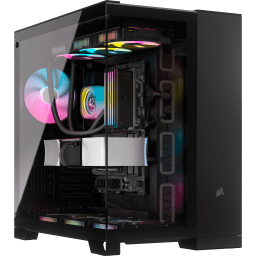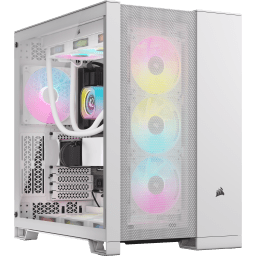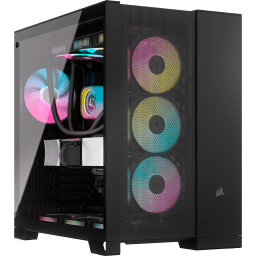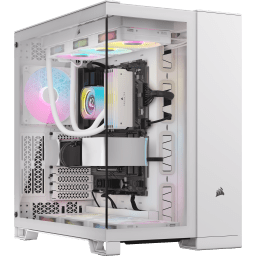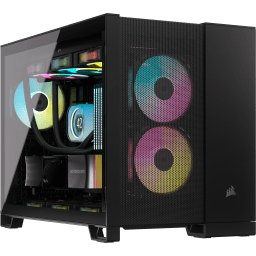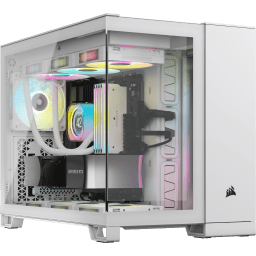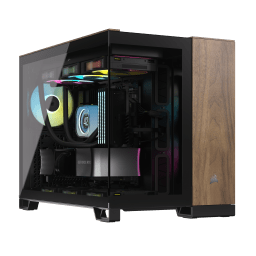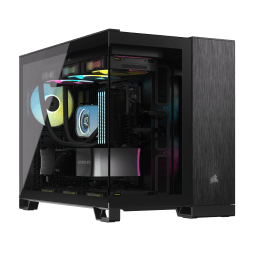BLOG
How CORSAIR is supporting reverse motherboards with the 2500D/X and 6500D/X cases
Last updated:
MSI Project Zero and ASUS BTF are both initiatives looking to change the game when it comes to motherboard design. Specifically, they move the connectors to the back of the motherboard to make for a cleaner look. However, such a paradigm shift is not without its challenges, with case compatibility being first and foremost, which is where CORSAIR comes in.
Since its inception, CORSAIR has been at the forefront of computing technology and has been quick to adapt to support convention-breaking innovations like this. Let’s take a look at what these reverse motherboards are all about, and how CORSAIR is supporting Project Zero and ASUS BTF - which stands for Back-to-The-Future, if you were wondering).


MSI Z790 Project Zero
ASUS ROG MAXIMUS Z790 HERO BTF
Why do cables have to be on the front of the motherboard, anyway?
Traditionally, the ports on a motherboard have all faced forwards, perpendicular to the PCB, away from the motherboard tray. This ensures compatibility, as all these cables immediately enter the free space inside the case, then are routed back around to the PSU.
Functionally this is fine, however, the goal of trying to make these cables look nice is such a challenging one that an entire industry has sprung up to make it that much easier. Bespoke sleeving, cable combs, custom-length cables, flat cables, round cables, right-angled adapters etc, etc.
But what if you didn’t have to worry about any of that? What if the ports for these cables came straight out of the back of the motherboard. After all, those cables are going to end up going back there anyway to make their way to the power supply. It seems like a no-brainer, but like any “no-brainer”, apparent simplicity belies significant technical and engineering problems.

How CORSAIR is helping the reverse motherboard concept flourish
Update: We've removed reverse connector mATX (Micro-ATX) motherboard compatibly from the 6500 Series of cases, as the PSU was found to block some connectors. ATX reverse connector motherboards remain unaffected and therefore fully compatible.
We mentioned that case compatibility is the biggest problem, but more accurately, it’s the motherboard tray that is the trick aspect here. Re-engineering such a crucial part of case design to account for entirely new standards without compromising something else is not easy.
Starting with the CORSAIR 2500/X and 6500D/X dual chamber cases (Available Feb 27), we’ve redesigned the motherboard tray, creating cut outs that align with the positioning of the reverse connectors. These cases are compatible with the MSI Project Zero and ASUS BTF port layouts, while also supporting traditional motherboards.
The gallery below shows imagery of the 6500D/X and 2500D/X cases. The additional slots around the perimeter of the motherboard tray correspond directly to the new port locations for MSI Project Zero and ASUS BTF.
It’s worth noting here that it’s not just the CPU 8-pin and ATX 24-pin cables that are the focus of these changes, it’s everything. Fan headers, front I/O, and SATA ports, they’re all hiding around the back now. Of course, punching out holes in the motherboard tray will inevitably make it less rigid, but we’ve managed to retain the strength of this section through some clever engineering during the design process of the 2500D/X and 6500D/X cases.
There is another issue that needs solving, though. As the ports poke straight out of the back of the motherboard, the cables would, in a traditional case, be stopped dead by the side panel and need to make a drastic 90-degree turn. Bending cables right at the port is a cardinal sin for PC builders, as it can damage the cables, pull pins out, and in some very serious cases, tear the port right off the motherboard. This is particularly problematic for USB 3.0 headers, as they are notoriously stiff, needing at least a couple of inches of headroom straight out of the port before you can really start bending the cable.
These issues have been solved with the dual-chamber design of the 6500D/X and 2500D/X. Sizing the rear chamber to fit an ATX PSU creates enough room for the cables of the ATX BTF and Project Zero motherboards. This allows the new reverse motherboard concept to work without issue, fully removing all the ports and cables from view. This results in the tidiest, sleekest, and most modern builds to date.
With the CORSAIR 6500D/X and 2500D/X cases supporting the new ATX motherboard designs from MSI and ASUS, gamers can finally build PCs with consumer-available products that look as refined and clean as any DIY custom solution out there.
From the LAB
For a bit of additional context, here's a video we've put together to show how our upcoming 6500D/X and 2500D/X cases we revealed at CES will work with BTF and Project Zero.
While our new 6500 and 2500 cases support the MSI Project Zero and ASUS BTF reverse motherboard designs, it should be noted that other brands are working on similar concepts, for example GIGABYTE with their Project Stealth. However, at time of writing, only MSI and ASUS's designs are compatible with CORSAIR cases.
РЕГИСТРАЦИЯ ПРОДУКЦИИ




